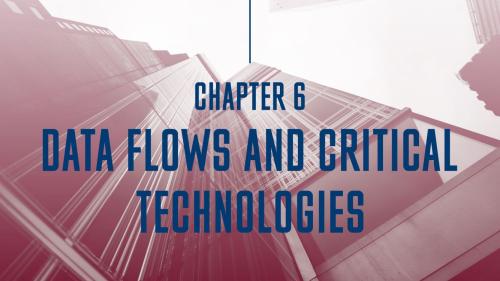Over the past decade there have been rapid increases in the performance of artificial intelligence (AI). For example, since 2015, AI has performed better than humans at image recognition, as measured in an annual image recognition contest called ImageNet. These achievements have led to a similarly rapid increase in corporate investment in AI and funding for venture-backed AI startups in a range of applications. According to the 2021 “AI Index Report,” of the categories in which it tracks investment, the use of AI in drugs and drug discovery received $13.8 billion in private investment in 2020, 4.5 times higher than 2019. There have been similarly dramatic advances in the capabilities of and interest in other emerging technologies, including applications of blockchain (such as cryptocurrency and non-fungible tokens) and recombinant DNA (perhaps best exemplified by the rapid development of COVID-19 vaccines).
Such rapid technological advances are likely to herald an unprecedented period of innovation and technological change which will fundamentally alter current industries and markets. What is different from previous periods of technological progress is the speed at which these developments are happening and the extent to which they will shape the operations of markets around the world. These technological breakthroughs garner excitement as well as trepidation. On the one hand, new technologies may lead to rapid economic growth and improvements in human well-being. On the other hand, they may affect workers, customers, and society in unanticipated or inequitable ways. Indeed, a common theme in popular press articles is that AI and robots will take jobs away from humans.
Policymakers around the world have started to grapple with these competing claims, seeking to implement policies that harness the benefits of AI and other emerging technologies while mitigating any downsides. The 2021 “AI Index Report” reveals that mentions of AI in the U.S. Congressional Record for the 116th Congress (2019 – 2021) are triple that of the 115th Congress (2017 – 2019). However, these technological breakthroughs pose a particular challenge for policymakers and regulators: they will have to be much more flexible and adaptable in their approaches to governing these new markets. In some respect, the technology is so far ahead of the regulations that new approaches to policymaking and regulatory decision making are needed.
Drawing on methods and insights from economics, political economy, public policy, business strategy, political science, and law, the Center on Regulation and Markets’ new series on “The Economics and Regulation of Artificial Intelligence and Emerging Technologies” will explore these issues. The series will feature contributions from experts of diverse viewpoints to elucidate underexplored ways in which AI and other emerging technologies affect the economy and society, and whether—and how—to regulate them most effectively. It is our hope that the new series provides a valuable resource for policymakers, regulators, business executives, academics, and the public.
The Brookings Institution is financed through the support of a diverse array of foundations, corporations, governments, individuals, as well as an endowment. A list of donors can be found in our annual reports published online here. The findings, interpretations, and conclusions in this report are solely those of its author(s) and are not influenced by any donation.





Commentary
Introducing the new series: The economics and regulation of artificial intelligence and emerging technologies
October 21, 2021